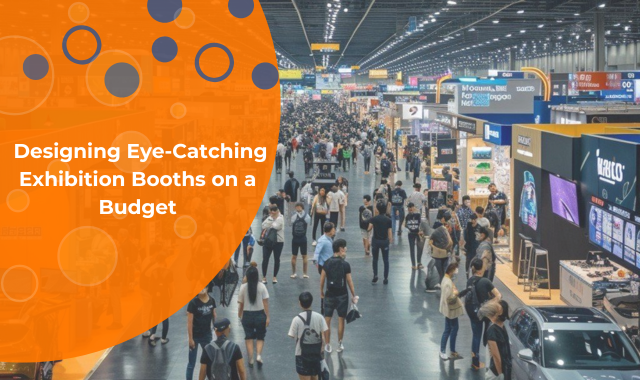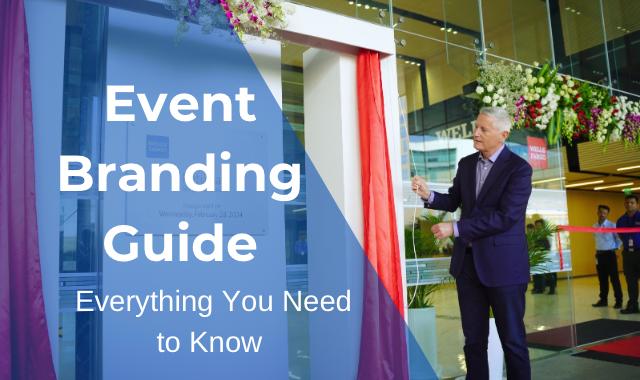
Published in:
Event Management
Integrating Digital & Physical Brand Activation Event Experience in Multi-Channel World
In today’s highly connected world, the distinction between digital and real experiences is becoming increasingly hazy. Customers anticipate flawless brand experiences at every touchpoint, online and offline.
A new era of brand activation has emerged due to this convergence, one in which digital and physical components are combined to produce impactful, immersive experiences. We’ll talk about integrated brand activation in this blog post, along with its advantages and methods for integrating digital and physical components in marketing efforts.
Understanding Brand Activation in Integrated Approach
Brand activation is the practice of bringing a brand to life through interactions that establish a bond with its target market. In the past, most brand activations were experiential events held in physical spaces. However, as digital engagement tools have grown in popularity, brand activation has become more inclusive, encompassing both online and physical components.
This is furthered by integrated brand activation, which creates a seamless, multi-dimensional experience by integrating physical event integration with digital touchpoints. This strategy acknowledges that customers don’t think in terms of “online” or “offline”—rather, they just want meaningful brand experiences, regardless of the medium.
The Benefits of Integrating Digital and Physical Brand Activation
Increased Involvement
By merging digital and physical components, brands can produce more dynamic and captivating experiences. This multimodal strategy draws viewers in and promotes more in-depth cross-platform audience engagement.
Increased Range
Hybrid brand activations can reach a larger audience by interacting with consumers through both online and physical marketing channels. This allows brands to engage with customers who have distinct interaction preferences.
Gathering and Interpreting Data
Future multichannel marketing strategies can benefit from the valuable data and insights that digital components allow organizations to gather about consumer behavior and preferences.
Enhanced Measurability
Digital components provide specific ROI indicators for integrated marketing initiatives, making monitoring and assessing brand activations’ effectiveness simpler.
Possibilities for Personalization
More personalization of experiences is made possible by the integration of digital technology, which allows interactions and material to be tailored to individual tastes across a variety of platforms.
Brand Uniformity
Synergy between brand activation and brand identity is created when an integrated activation is conducted properly, ensuring consistent brand messaging and experience across all touchpoints.
Strategies of Integrating Digital and Physical Brand Activation
Utilize QR Codes to Fill the Void
QR codes are a straightforward but efficient method of linking digital content to physical locations. Put QR codes on product packaging, interactive wall displays, or event signage to make it simple to access more details, unique material, or interactive activities.
Put Augmented Reality (AR) Activities into Practice
With AR technology, brands can create immersive experiences by superimposing digital material over the real environment. This can be especially useful for animating static displays and product demos, which can improve cross-channel brand engagement.
Create Physical Spaces That Are Social Media-Friendly
Consider social media sharing while creating physical environments or experiences. By encouraging participants to post about their experiences online, you may increase the activation’s reach and produce user-generated content that closes the gap between digital and physical media.
Include Interactive Touchscreens
Utilize interactive digital experiences by putting touchscreen displays in actual spaces. To seamlessly combine in-person and virtual interactions, they can provide product details, customization choices, or even brand-related games and quizzes.
Make Use of Technology Based on Location
Geofencing or beacon technology can send users personalized digital information when they enter particular physical areas to improve the omnichannel marketing experience.
Create Companion Applications for Live Events
Develop mobile applications that augment the experience of attending live events or stopping by physical sites to cultivate a genuine multi-platform brand activation encounter.
Put Virtual Reality (VR) Experiences in Place
Create a distinctive fusion of virtual and in-person events using VR technology to take users to immersive brand experiences. This can be done as a stand-alone activation or as part of a bigger physical event.
Make Digital Afterthoughts for Experiences in Perso
By offering digital experiences or information that participants can interact with beyond the event, you can prolong the life of physical activations and guarantee ongoing cross-platform audience engagement.
Utilize Live Streaming to Continue in-person events.
Using live streaming platforms, physical events or experiences can be broadcast to a larger online audience, resulting in a hybrid brand activation that reaches participants in person and virtually.
Apply Gamification Through All Channels
Develop games or tasks accessible through digital and physical channels to promote interaction across several platforms and cultivate a unified brand identity.
Successful Case Studies of Integrated Brand Activation from Big Brands
Nike’s House of Innovation
The “House of Innovation,” Nike’s flagship stores, skillfully combine virtual and real-world experiences. Customers may view product descriptions, check in-store inventory, and request products to try on by using the Nike app to scan QR codes on mannequins. Successful digital-physical integration is demonstrated by the stores’ inclusion of digital pickup lockers for online orders and customization studios where customers may use touchscreen interfaces to create their own shoes.
Coca Cola’s “Share a Coke” Campaig
This ad combined online interaction with actual product packaging. Popular names were added to personalized Coke bottles to encourage individuals to find bottles bearing their names or the names of friends and family. In a true omnichannel marketing move, the campaign also featured a website where users could make virtual personalized bottles to share on social media. This created a link between the digital and physical worlds.
Pokeman Go
Pokémon Go, despite being largely a mobile game, effectively combined virtual and real-world experiences by motivating players to visit real-world areas in order to capture virtual critters. Numerous companies took advantage of this by organizing Pokémon-themed events and promotions, generating foot traffic for actual places through digital interaction, and developing engaging brand experiences.
Major Challenges and Consideration
Technical Difficulty
Smooth integration between digital and physical components can be technically difficult, and specific knowledge of brand activation technologies may be necessary.
Expense Factors
Because integrating cutting-edge technologies like AR and VR can be costly, marketers must carefully assess the return on investment of their integrated marketing initiatives.
User Interface
To develop really seamless brand experiences, the integration should feel organic and improve the overall experience rather than forced or gimmicky.
Security and Privacy of Data
Cross-channel brand interaction requires careful consideration of privacy and security issues arising from the collection and use of customer data across channels.
Uniformity Throughout Channels
In order to achieve genuine omnichannel marketing success, maintaining a consistent brand experience across a variety of touchpoints can be difficult and need careful strategy and execution.
Best Practices for Successful Integration
Commence with the plan
Start by outlining your goals and the ways in which hybrid brand activation will contribute to their accomplishment. Make sure the integration enhances the customer experience and fulfills a purpose.
Recognize Your Audience
Understanding the preferences and habits of your target audience across digital and physical channels is important for building relevant and compelling blended brand experiences.
Emphasize Seamlessness
Aim for a seamless, natural flow from digital to physical components. From the user’s point of view, the integration should be smooth and natural, resulting in genuinely seamless brand experiences.
Put Value First
Make sure the connected components offer the consumer true value, whether it is improved accessibility, convenience, or entertainment across all platforms.
Test and Retest
Before launching, thoroughly test all connected components. Then, be ready to receive feedback and adjust your multi-platform brand activation approach as needed.
Train Your Team
Make sure that every employee participating in the activation—from event workers to customer service agents—is knowledgeable about the linked features and capable of providing customers with appropriate assistance across all touchpoints.
Conclusion
The convergence of digital and physical brand activation will become increasingly crucial as customer expectations change and technology advances. Brands that effectively combine these components can produce impactful, enduring experiences that connect with their target market and encourage deep involvement.
When organizing your upcoming brand activation, think about how you might combine offline and online marketing components to produce a multifaceted, fully immersive experience. Digital-physical integration offers countless opportunities, with potentially revolutionary effects on your business. Gaining expertise in multichannel marketing and hybrid brand activation will put you in a strong position to deliver the smooth, exciting experiences modern customers need.
Apply Gamification Through All Channels
Maze Events has an established history of executing cutting-edge tactics and technologies in brand activations. They can assist you in maximizing the impact of your activation, ensuring smooth execution across all channels, and navigating the difficulties of digital-physical integration. When Maze Events is in charge, your brand activation will make the most of the digital and physical worlds, giving your audience an amazing experience.
SHARE ON
You may also like
Adding {{itemName}} to cart
Added {{itemName}} to cart
Loading...



